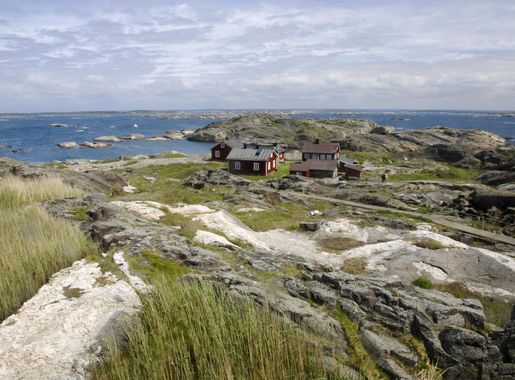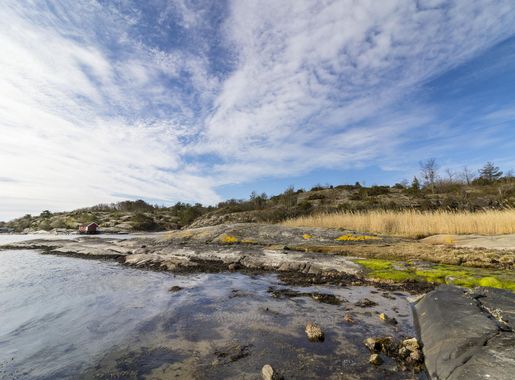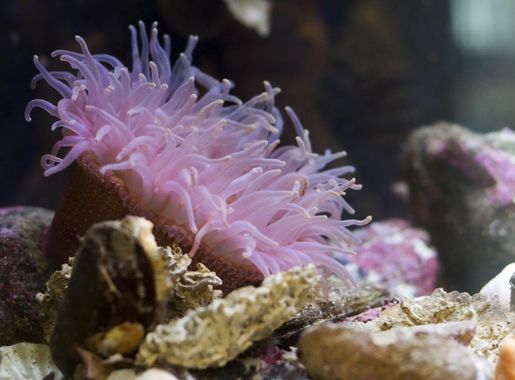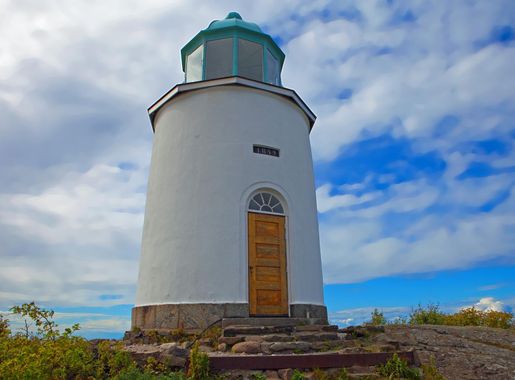
Kosterhavet National Park: Sweden's Marine Wonderland
Discover the wonders of Kosterhavet National Park, Sweden's first marine national park, featuring diverse marine life, crystal-clear waters, and stunning coastal landscapes.
Kosterhavet National Park is Sweden's first marine national park, located on the west coast, near the Norwegian border. It is known for its stunning natural beauty and rich marine life. The park covers over 400 square kilometers of coastal waters, islands, and rocky shores, offering a unique experience for nature lovers and adventure seekers alike. The park is home to over 6,000 different marine species, including rare fish, seals, and seabirds. Visitors can explore the underwater world through snorkeling and diving, with crystal-clear waters providing excellent visibility. On land, the park's islands and archipelagos are perfect for hiking, cycling, and birdwatching. Kosterhavet is also a haven for kayaking and boating enthusiasts. The calm waters and numerous islands make it an ideal location for paddling around and discovering hidden coves and beaches. The nearby Koster Islands are car-free, adding to the serene and unspoiled atmosphere of the area. Whether you are interested in marine biology, outdoor activities, or simply soaking in the breathtaking scenery, Kosterhavet National Park offers something for everyone. It's a destination that promises both relaxation and adventure in a pristine natural setting.
Local tips in Kosterhavet National Park
- Visit during the summer months (June to August) for the best weather and optimal conditions for outdoor activities.
- Bring your own snorkeling or diving gear to fully experience the underwater beauty of the park.
- Take advantage of the car-free Koster Islands by renting a bicycle to explore the area at a leisurely pace.
- Pack a picnic and enjoy a meal on one of the many scenic beaches or rocky outcrops.
- Book guided tours or activities in advance, especially during peak tourist season, to ensure availability.
Kosterhavet National Park: Sweden's Marine Wonderland
Kosterhavet National Park is Sweden's first marine national park, located on the west coast, near the Norwegian border. It is known for its stunning natural beauty and rich marine life. The park covers over 400 square kilometers of coastal waters, islands, and rocky shores, offering a unique experience for nature lovers and adventure seekers alike. The park is home to over 6,000 different marine species, including rare fish, seals, and seabirds. Visitors can explore the underwater world through snorkeling and diving, with crystal-clear waters providing excellent visibility. On land, the park's islands and archipelagos are perfect for hiking, cycling, and birdwatching. Kosterhavet is also a haven for kayaking and boating enthusiasts. The calm waters and numerous islands make it an ideal location for paddling around and discovering hidden coves and beaches. The nearby Koster Islands are car-free, adding to the serene and unspoiled atmosphere of the area. Whether you are interested in marine biology, outdoor activities, or simply soaking in the breathtaking scenery, Kosterhavet National Park offers something for everyone. It's a destination that promises both relaxation and adventure in a pristine natural setting.
When is the best time to go to Kosterhavet National Park?
Iconic landmarks you can’t miss
Entrance Tjärnö / Saltö
Explore the serene landscapes and diverse wildlife of Tjärnö and Saltö National Reserve, a hidden gem in Sweden's Bohuslän region.

Naturum Kosterhavet
Discover the marine marvels of Kosterhavet National Park at Naturum Kosterhavet, Sweden's first marine visitor center, where nature and education meet.
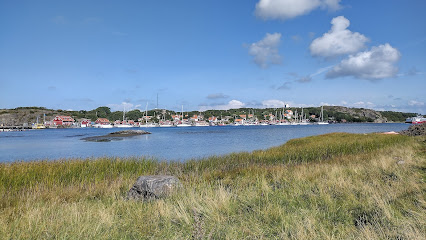
naturum Kosterhavet
Explore the enchanting marine ecosystems and breathtaking views at Naturum Kosterhavet, the gateway to Sweden's first marine national park.
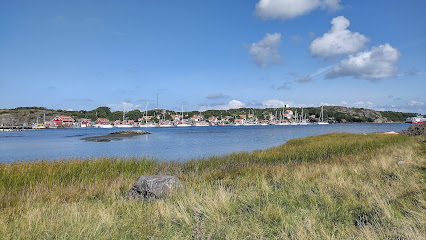
Koster Islands
Explore the breathtaking Koster Islands in Sweden, a serene archipelago with stunning landscapes, rich marine life, and charming villages perfect for relaxation and adventure.

kosteroarnanaturreservat
Experience the breathtaking landscapes and diverse wildlife at Kosteroarna Nature Reserve, the ultimate escape into Sweden's natural beauty.
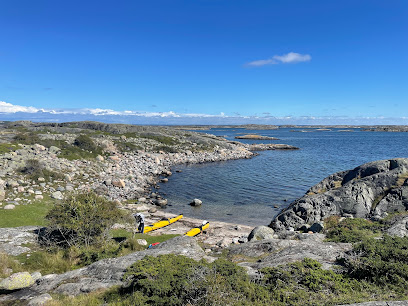
Tjärnö Akvarium
Explore Tjärnö Akvarium in Strömstad, Sweden, for an unforgettable journey through marine life and science.
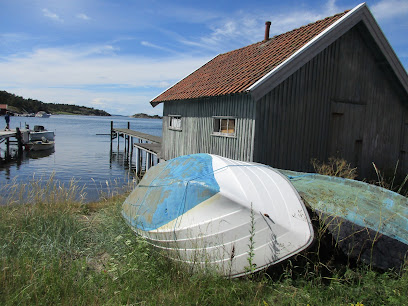
Tjärnö
Discover the unspoiled beauty of Tjörnö Island, a serene getaway in Sweden's archipelago, perfect for nature lovers and those seeking tranquility.
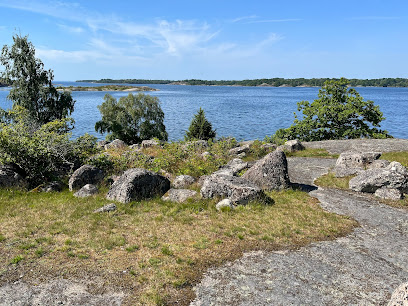
Unmissable attractions to see
Rock Carvings in Tanum
Explore Sweden's ancient heritage at the Rock Carvings in Tanum, a UNESCO World Heritage site of stunning petroglyphs and natural beauty.
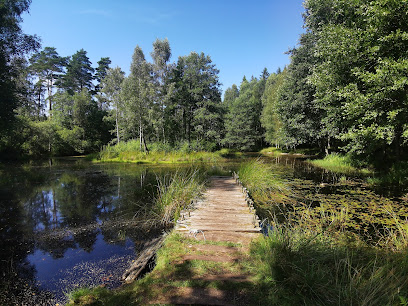
Daftöland
Discover the excitement of Daftöland, a premier amusement park in Strömstad, Sweden, featuring thrilling rides, family attractions, and unforgettable entertainment.
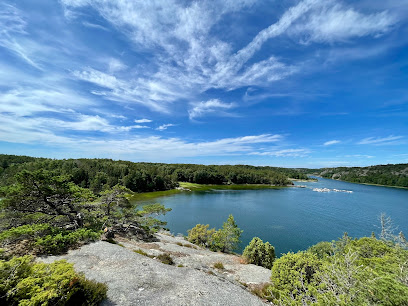
Entrance Tjärnö / Saltö
Discover Tjärnö and Saltö, a stunning marine national reserve in Sweden, offering breathtaking landscapes, rich marine life, and endless outdoor adventures.
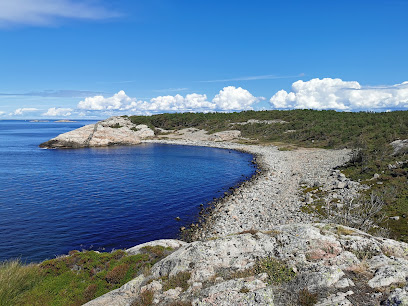
Stenskeppet - Blomsholm Stone Ship
Explore the ancient Blomsholm Stone Ship - a Viking Age marvel nestled in the beautiful Strömstad countryside, rich in history and natural beauty.
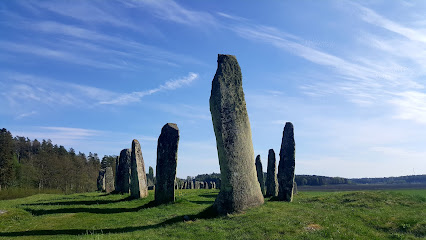
Capri naturreservat
Discover the serene beauty of Capri Naturreservat in Strömstad, Sweden - a perfect escape for nature lovers and adventure seekers.
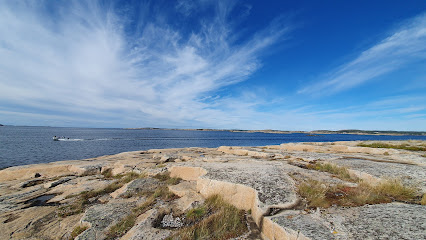
Strömstads Museum
Explore Strömstad Museum: A Journey Through Maritime Heritage and Local Culture in the Heart of Strömstad.
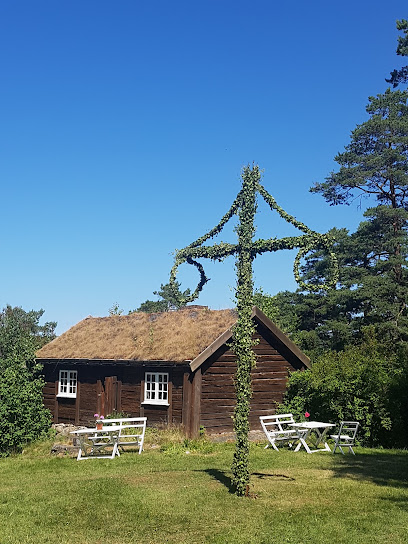
Syd Långö
Experience the serene beauty and outdoor adventures at Syd Långö, a breathtaking tourist attraction in the Bohuslän archipelago.
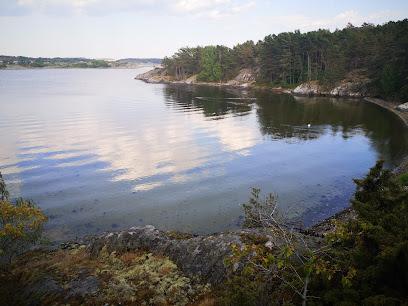
Kuststigen Bohuslän (Strömstad)
Discover the breathtaking trails of Kuststigen Bohuslän in Strömstad, where nature meets adventure along Sweden's stunning coastline.
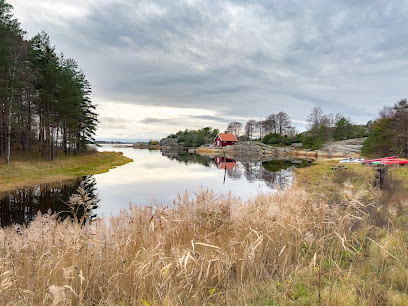
Dragonkullen
Experience the breathtaking views at Dragonkullen, a picturesque vista point in Strömstad, Sweden, perfect for nature lovers and photographers.
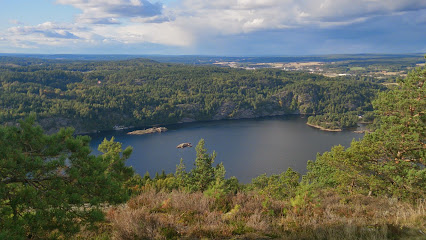
Sydkoster Valfjäll
Explore the breathtaking beauty of Sydkoster Valfjäll, a serene tourist attraction in Sweden's stunning Bohuslän archipelago, ideal for nature lovers and hikers.

Diggiloo - Strömstad
Experience the vibrant entertainment scene at Diggiloo, Strömstad's premier tourist attraction, combining stunning scenery with captivating performances.
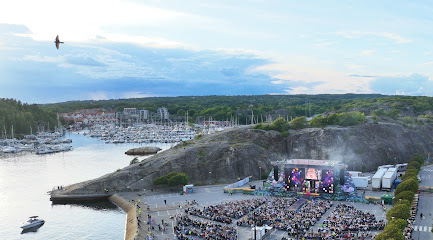
Stadshus Strömstad
Explore the stunning Stadshus Strömstad, a historic site that showcases the beauty and culture of Sweden's coastal town.
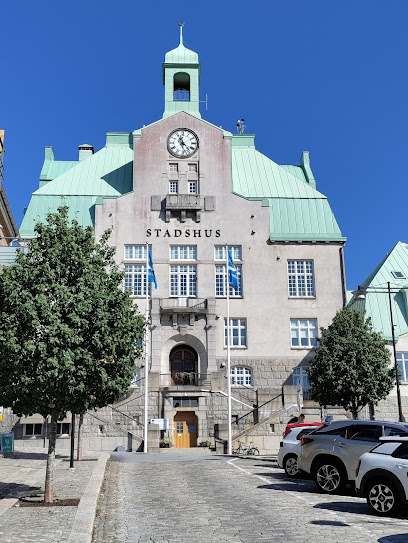
Saltö klippstranden
Explore Saltö Klippstranden's breathtaking trails, stunning coastal views, and tranquil atmosphere in the heart of Strömstad's natural beauty.
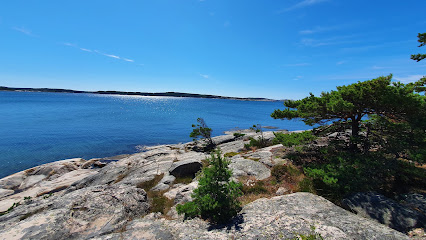
Hällristningar Massleberg
Explore the ancient rock carvings of Hällristningar Massleberg, a UNESCO World Heritage Site in Strömstad, and unravel the mysteries of Sweden's prehistoric past.
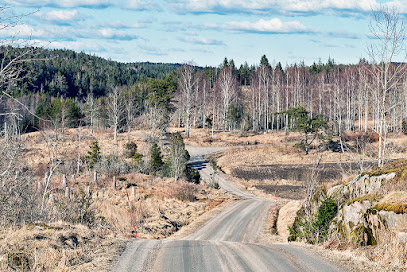
Sydkoster
Discover the breathtaking hiking trails and serene beauty of Sydkoster, a hidden paradise in Sweden perfect for nature lovers and outdoor enthusiasts.
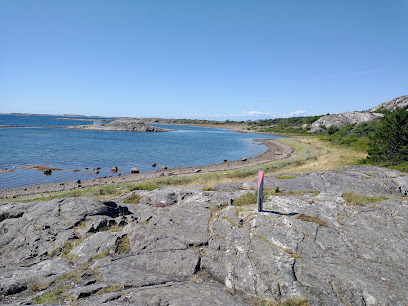
Essential places to dine
Kosterhavet National Park
Explore Kosterhavet National Park: A Marine Wonderland with Stunning Landscapes and Diverse Wildlife Awaiting Your Discovery.

Strandkanten nordkoster
Discover Strandkanten in Nordkoster – where fresh seafood meets breathtaking views in a charming island setting.
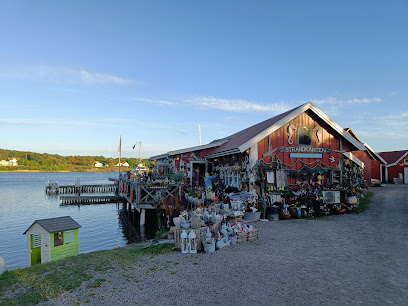
Kosters Trädgårdar
Experience sustainable living at Kosters Trädgårdar - where organic farming meets stunning gardens and adventurous outdoor activities.
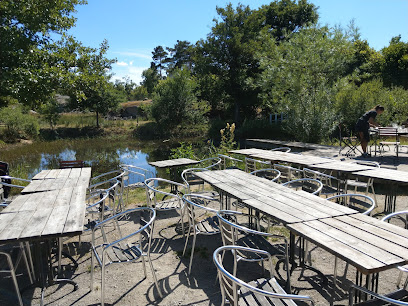
Rossö Harbor Cafe
Discover delicious local flavors at Rossö Harbor Cafe while enjoying breathtaking views of Sweden's stunning coastline.
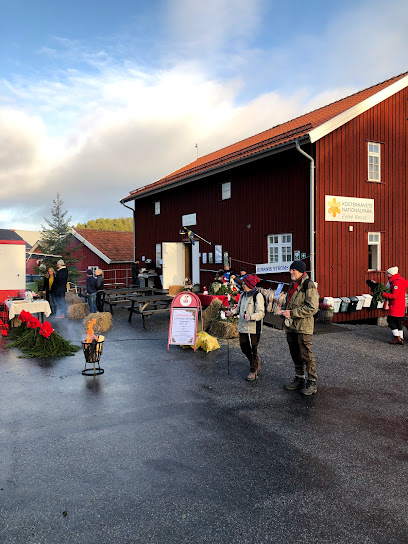
Kläpphagen Koster
Discover exceptional dining at Kläpphagen Koster – where local flavors meet stunning coastal views on Sydkoster Island.
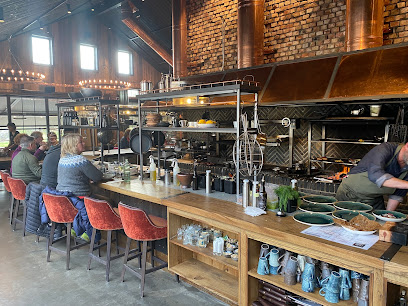
Naturum Kosterhavet
Explore Naturum Kosterhavet: A gateway to Sweden's first marine national park with stunning views and interactive exhibits.
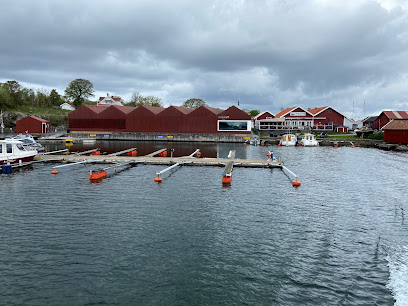
Kosterhavets Ekobod
Discover exquisite local flavors at Kosterhavets Ekobod on Nordkoster Island – where culinary excellence meets breathtaking coastal views.
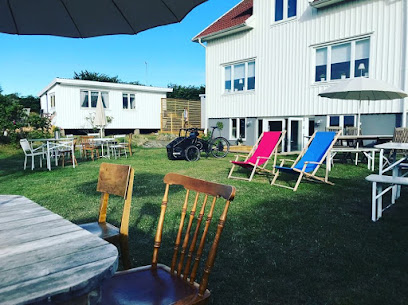
Bokhandlarens pub
Discover authentic Swedish cuisine at Bokhandlarens Pub in Sydkoster - where local flavors meet cozy ambiance.
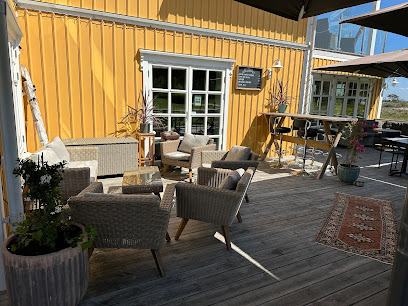
Sundets skaldjurscafe
Experience fresh seafood delights amidst breathtaking views at Sundets Skaldjurscafe on Koster Islands.
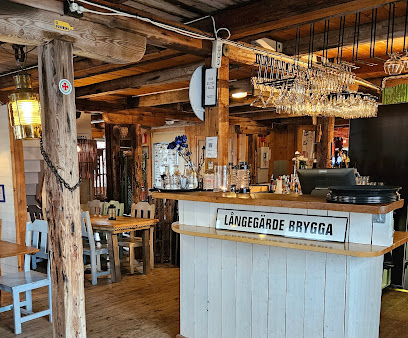
Markets, malls and hidden boutiques
Nordby Shoppingcenter
Discover the ultimate shopping experience at Nordby Shoppingcenter in Strömstad, Sweden, where variety meets convenience and fun.
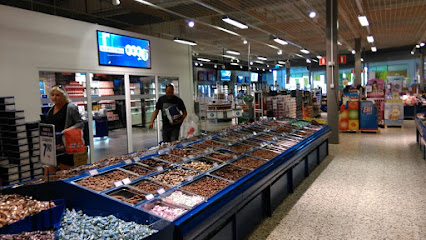
Eurocash Strömstad
Explore the local flavors at Eurocash Strömstad, your top grocery destination for fresh produce and Swedish delicacies in the heart of Strömstad.
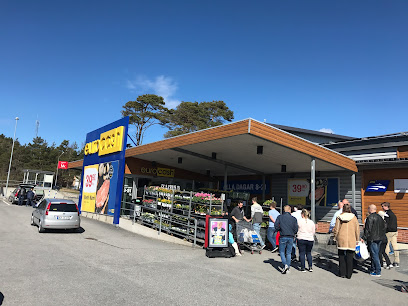
Kosterhavet National Park
Explore Kosterhavet National Park, Sweden’s first marine national park, where breathtaking landscapes and diverse wildlife await your discovery.
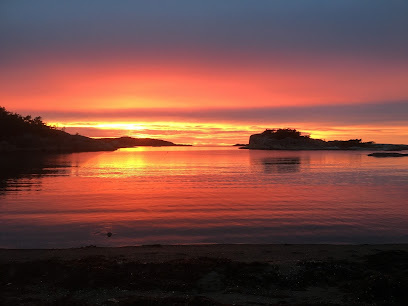
Strömstad Shoppingcenter
Discover the vibrant Strömstad Shoppingcenter, where shopping meets dining in a delightful retail experience.

Asian Market Stromstad
Explore Asian Market Stromstad, your gateway to authentic Asian groceries, fresh produce, and specialty foods in Strömstad.
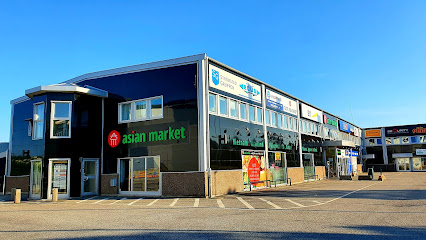
Willys Strömstad
Discover local flavors and essentials at Willys Strömstad, your go-to grocery store in the heart of Strömstad, Sweden.
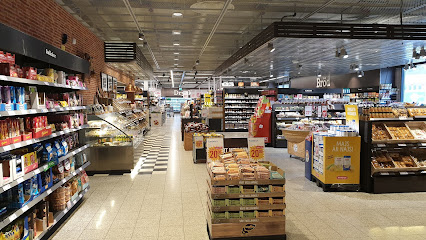
Strandkanten nordkoster
Experience the charm of Strandkanten Nordkoster, where exquisite dining meets local flavors in a stunning coastal setting.
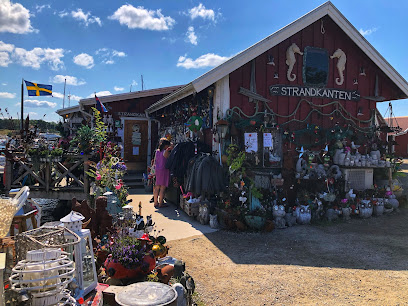
Alnakhil Halalkött AB
Explore the diverse flavors of Strömstad at Alnakhil Halalkött AB, your go-to grocery store for authentic halal products and local specialties.
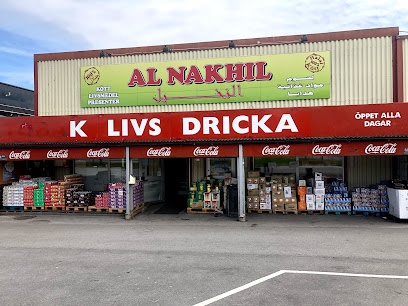
naturum Kosterhavet
Experience the captivating marine life and stunning landscapes of Kosterhavet at Naturum Kosterhavet, Sweden’s premier visitor center.
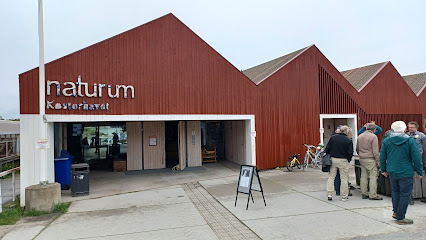
Gottebiten
Explore the sweet side of Strömstad at Gottebiten, a candy store filled with delightful treats and local specialties.
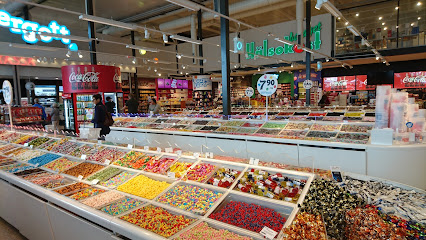
Återbruket
Explore Återbruket in Strömstad for unique thrift finds and sustainable shopping experiences that support eco-friendly fashion.
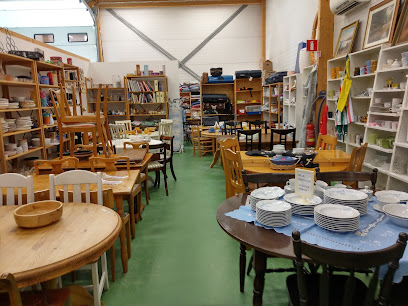
H&M
Explore affordable fashion at H&M in Strömstad, featuring stylish clothing and accessories for the whole family in a vibrant shopping atmosphere.

Järnia - Strömstad Järn & Fritid
Explore the great outdoors and elevate your home projects at Järnia - Strömstad Järn & Fritid, where adventure meets quality supplies.

Rämjes Eftr Jan-Erik Rusth Musik Radio & TV HB
Explore the melodic wonders of Rämjes Eftr Jan-Erik Rusth Musik Radio & TV HB, Strömstad's premier music store with a rich collection of instruments and vinyl.
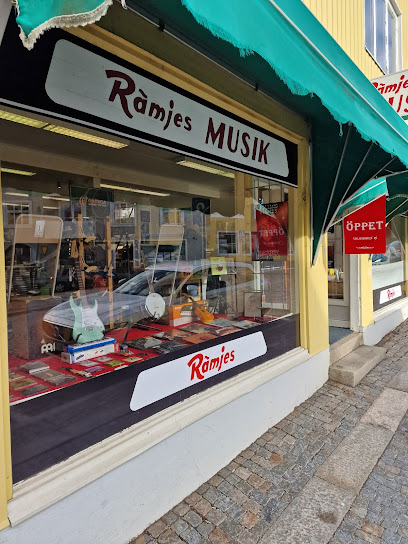
SeaSea Båttillbehör
SeaSea Båttillbehör in Strömstad: Your one-stop shop for boat accessories amidst stunning coastal scenery.
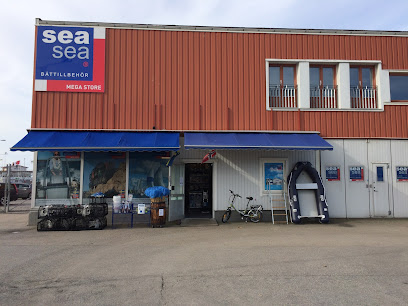
Essential bars & hidden hideouts
Restaurangbiografen Park
Experience the perfect fusion of delicious Scandinavian cuisine and captivating films at Restaurangbiografen Park in Strömstad.
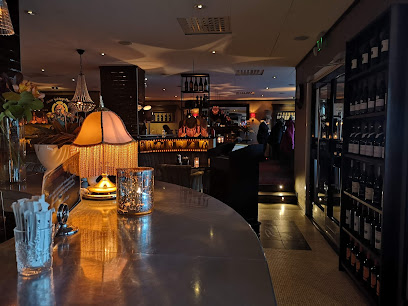
Toro
Discover Toro in Strömstad for an unforgettable culinary experience featuring barbecue, tapas, and pizza in a vibrant waterfront setting.
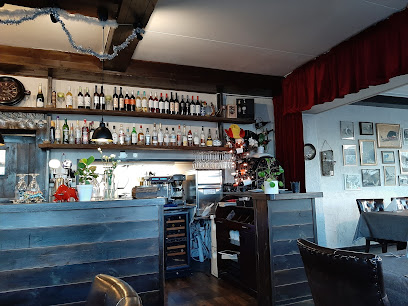
Göstases
Experience exquisite seafood dining at Göstases, where fresh flavors meet stunning coastal views in Strömstad.
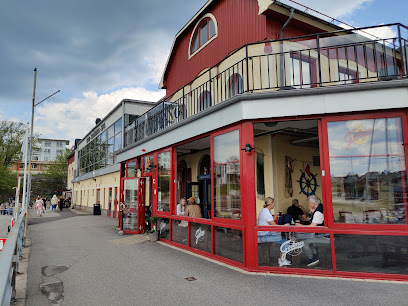
Bullseye Saloon Strömstad
Discover the vibrant flavors of Bullseye Saloon in Strömstad, where gourmet hamburgers and a lively bar atmosphere await you.
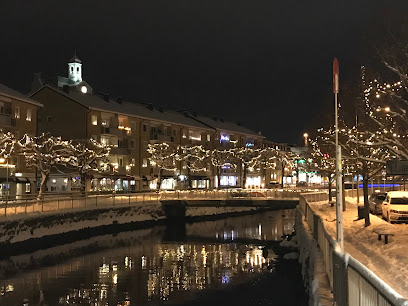
Strandkanten nordkoster
Experience the best of local Scandinavian cuisine at Strandkanten Nordkoster, a charming restaurant and gift basket store on Nordkoster island.

Kosters Rökeri AB
Experience the finest seafood at Kosters Rökeri AB—where local flavors and sustainable practices meet in the heart of Sydkoster's stunning landscape.
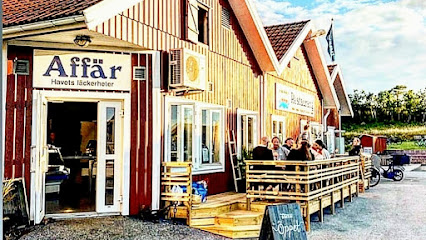
Kontoret Bar & Restaurang
Discover the vibrant atmosphere of Kontoret Bar & Restaurang in Strömstad, a sports bar offering delicious food, refreshing drinks, and thrilling live sports.
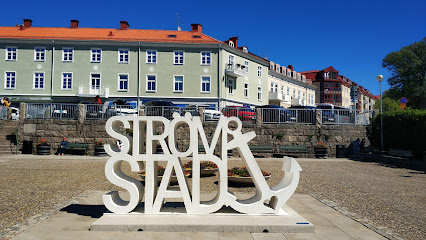
Rossö Harbor Cafe
Experience the flavors of the archipelago at Rossö Harbor Cafe, a perfect dining spot for tourists exploring the scenic beauty of Sweden.
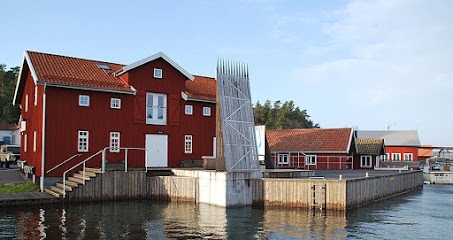
Kläpphagen Koster
Experience fresh seafood and stunning ocean views at Kläpphagen Koster, a perfect dining destination in the heart of Sydkoster, Sweden.

Kosterhavets Ekobod
Discover the flavors of Swedish coastal cuisine at Kosterhavets Ekobod, where local ingredients meet stunning natural scenery.
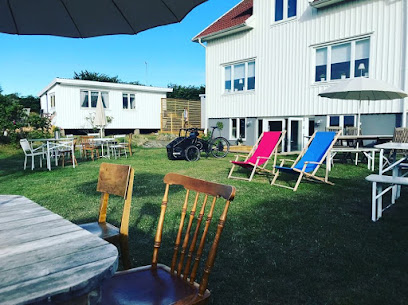
Bokhandlarens pub
Experience the best of local cuisine at Bokhandlarens Pub in Sydkoster - a culinary gem with a cozy atmosphere.
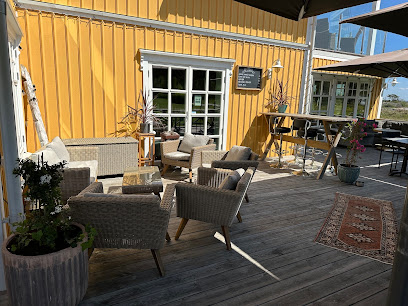
Stenhoggarn Pub og Restaurant
Discover the vibrant atmosphere and local flavors at Stenhoggarn Pub og Restaurant in Strömstad, your gateway to Swedish culinary delights.
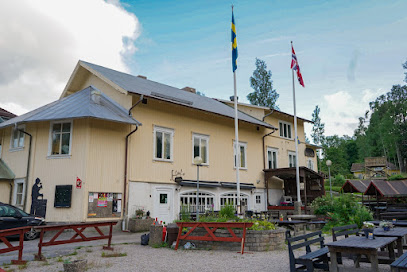
Restaurant Packhuset
Experience the best of local cuisine and seafood at Restaurant Packhuset, nestled in the scenic Daftö Resort with stunning waterfront views.
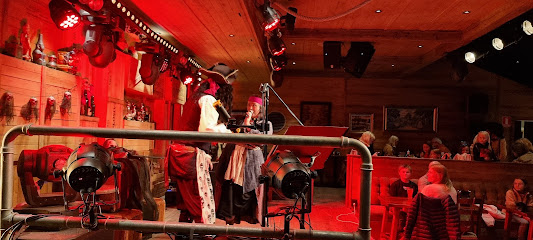
The COD
Discover The COD in Strömstad, a lively bar offering a fantastic drink selection and stunning waterfront views for an unforgettable night out.
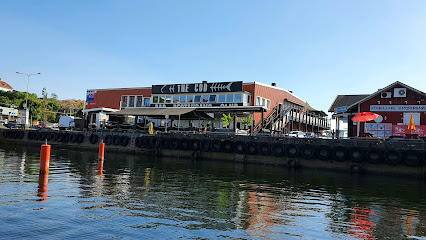
Pacos
Discover the flavors of Sydkoster at Pacos, where local ingredients meet international cuisine in a cozy, inviting atmosphere.

Local Phrases about Kosterhavet National Park
-
- HelloHej
[hey] - GoodbyeAdjö
[ad-yu] - YesJa
[ya] - NoNej
[nay] - Please/You're welcomeSnälla/Tack
[snail-la/tack] - Thank youTack
[tack] - Excuse me/SorryUrsäkta
[oor-sek-ta] - How are you?Hur mår du?
[hur mor doo] - Fine. And you?Bra. Och du?
[bra. okh doo] - Do you speak English?Talar du engelska?
[ta-lar doo eng-el-ska] - I don't understandJag förstår inte
[yahg for-stor een-te]
- HelloHej
-
- I'd like to see the menu, pleaseJag skulle vilja se menyn, tack
[yahg skul-le vil-ya say me-nin, tack] - I don't eat meatJag äter inte kött
[yahg at-er een-te chot] - Cheers!Skål!
[skol] - I would like to pay, pleaseJag skulle vilja betala, tack
[yahg skul-le vil-ya bet-ta-la, tack]
- I'd like to see the menu, pleaseJag skulle vilja se menyn, tack
-
- Help!Hjälp!
[yelp] - Go away!Gå iväg!
[go iv-ayg] - Call the Police!Ring polisen!
[ring po-lee-sen] - Call a doctor!Ring en läkare!
[ring en la-kar-e] - I'm lostJag är vilse
[yahg air vil-se] - I'm illJag är sjuk
[yahg air shuuk]
- Help!Hjälp!
-
- I'd like to buy...Jag skulle vilja köpa...
[yahg skul-le vil-ya chaw-pa] - I'm just lookingJag tittar bara
[yahg tee-tar ba-ra] - How much is it?Hur mycket kostar det?
[hur my-ket kost-ar det] - That's too expensiveDet är för dyrt
[det air fur deert] - Can you lower the price?Kan du sänka priset?
[kan doo sain-ka pre-set]
- I'd like to buy...Jag skulle vilja köpa...
-
- What time is it?Vad är klockan?
[vad air klok-an] - It's one o'clockKlockan är ett
[klok-an air et] - Half past (10)Halv (tio)
[halv tee-o] - MorningMorgon
[mor-gon] - AfternoonEftermiddag
[ef-ter-mid-dag] - EveningKväll
[kvel] - YesterdayIgår
[ee-gor] - TodayIdag
[ee-dag] - TomorrowImorgon
[ee-mor-gon] - 1Ett
[et] - 2Två
[tvo] - 3Tre
[tre] - 4Fyra
[fyra] - 5Fem
[fem] - 6Sex
[sex] - 7Sju
[shu] - 8Åtta
[ot-ta] - 9Nio
[nee-o] - 10Tio
[tee-o]
- What time is it?Vad är klockan?
-
- Where's a/the...?Var finns en/ett...?
[var fins en/et] - What's the address?Vad är adressen?
[vad air ad-ress-en] - Can you show me (on the map)?Kan du visa mig (på kartan)?
[kan doo vee-sa may (poh kart-an)] - When's the next (bus)?När går nästa (buss)?
[nair gor nes-ta (boos)] - A ticket (to ....)En biljett (till ....)
[en bil-yet (til)]
- Where's a/the...?Var finns en/ett...?
History of Kosterhavet National Park
-
The waters surrounding Kosterhavet National Park have been vital maritime routes since ancient times. Archaeological findings reveal that the area was used by seafaring people as early as the Bronze Age, around 1500 BCE. These early inhabitants relied on the rich marine life for sustenance and used the waterways for trade and communication.
-
During the Viking Age (circa 800–1050 CE), the Kosterhavet archipelago was an essential part of the Norse maritime network. The Vikings, renowned for their seafaring prowess, used these waters for navigation, raiding, and trading expeditions. Evidence of Viking activity, including burial sites and artifacts, has been discovered on the islands, highlighting their historical importance.
-
In the Middle Ages, Kosterhavet became known for its thriving fishing communities. The rich waters provided abundant catches of herring and cod, which were essential to the local economy. The fishing villages that emerged during this period laid the foundation for the maritime culture that still characterizes the region today.
-
The 18th century saw increased naval activity in the waters of Kosterhavet due to conflicts between Sweden and neighboring countries. The strategic location of the archipelago made it a focal point during the Great Northern War (1700–1721) and subsequent skirmishes. Coastal defenses and lookout points were established to monitor and protect the area from naval incursions.
-
Kosterhavet National Park was officially established in 2009, becoming Sweden's first marine national park. The park was created to protect the unique marine biodiversity of the area, including its coral reefs, kelp forests, and diverse marine species. The designation of the park marked a significant step in preserving the natural and cultural heritage of the Kosterhavet archipelago for future generations.
-
The cultural heritage of Kosterhavet is deeply intertwined with its maritime history. Local traditions, such as the annual herring festival and traditional boat-building techniques, have been preserved and celebrated by the island communities. The park's visitor centers and museums offer insights into the region's cultural and historical legacy, fostering a deeper appreciation for its unique identity.
Kosterhavet National Park Essentials
-
Kosterhavet National Park is located off the west coast of Sweden, near the border with Norway. The nearest major city is Gothenburg, which has an international airport (Gothenburg Landvetter Airport). From Gothenburg, you can take a train or bus to Strömstad, the gateway to Kosterhavet. The train journey takes about 2.5 hours. From Strömstad, you can catch a ferry to the Koster Islands. The ferry ride takes approximately 30-45 minutes and operates year-round but with more frequent services in the summer.
-
Once you arrive at the Koster Islands, the primary modes of transportation are bicycles and walking, as motor vehicles are largely restricted. Bicycles can be rented at various locations on the islands. There are also electric shuttle services available for those who might need them. For exploring the marine areas, kayaks and boats can be rented. The islands are well-connected by a network of walking and cycling paths that make it easy to get around.
-
The official currency in Sweden is the Swedish Krona (SEK). Credit and debit cards are widely accepted, and there are ATMs available in Strömstad and on the Koster Islands. However, it is advisable to carry some cash for smaller establishments and in case of any technical issues with card payments. Mobile payment options like Swish are also widely used.
-
Kosterhavet National Park is generally very safe for tourists. There are no specific areas with high crime rates targeting tourists. However, standard precautions should be taken, such as not leaving belongings unattended and being aware of your surroundings, especially in crowded areas like ferry terminals. The islands have a low crime rate, and the local community is known to be friendly and helpful.
-
In case of emergency, dial 112 for immediate assistance. The Koster Islands have a small medical clinic for minor health issues, but for more severe medical emergencies, you may need to go to the hospital in Strömstad or Gothenburg. It is highly recommended to have travel insurance that covers medical emergencies and evacuation. Lifeguards are not stationed at all beaches, so exercise caution when swimming or engaging in water activities.
-
Fashion: Do wear comfortable, weather-appropriate clothing. Layering is recommended due to unpredictable weather. Avoid overly flashy or revealing clothing. Religion: Do respect local customs and traditions, although the area is not particularly religious. Public Transport: Do be punctual as public transport in Sweden runs on a strict schedule. Don’t be loud or disruptive on public transport. Greetings: Do greet locals with a friendly 'hej' (hello) and a handshake. Eating & Drinking: Do try local seafood delicacies. Don’t leave a large amount of food uneaten as it is considered wasteful.
-
To experience Kosterhavet National Park like a local, consider visiting during the off-peak seasons to enjoy a quieter, more serene environment. Engage with local fishermen and ask about the best spots for fishing or kayaking. Try the locally caught seafood at one of the island's restaurants. Participate in guided tours to learn more about the unique marine biodiversity and conservation efforts. Don’t miss the chance to explore the underwater snorkeling trails, which are a unique feature of the park.
Nearby Cities to Kosterhavet National Park
-
Things To Do in Oslo
-
Things To Do in Skagen
-
Things To Do in Gothenburg
-
Things To Do in Karlstad
-
Things To Do in Frederikshavn
-
Things To Do in Kristiansand
-
Things To Do in Aalborg
-
Things To Do in Jönköping
-
Things To Do in Örebro
-
Things To Do in Linköping
-
Things To Do in Randers
-
Things To Do in Viborg
-
Things To Do in Norrköping
-
Things To Do in Aarhus
-
Things To Do in Stavanger


